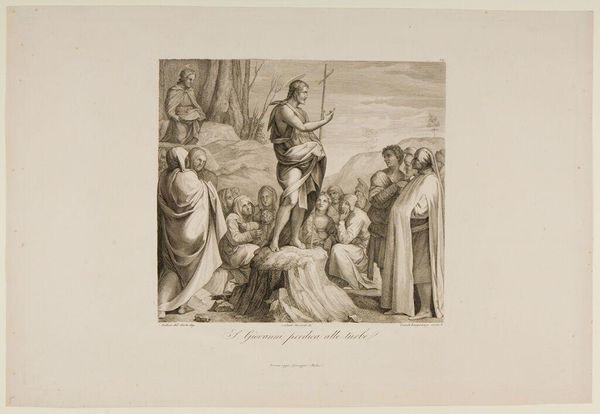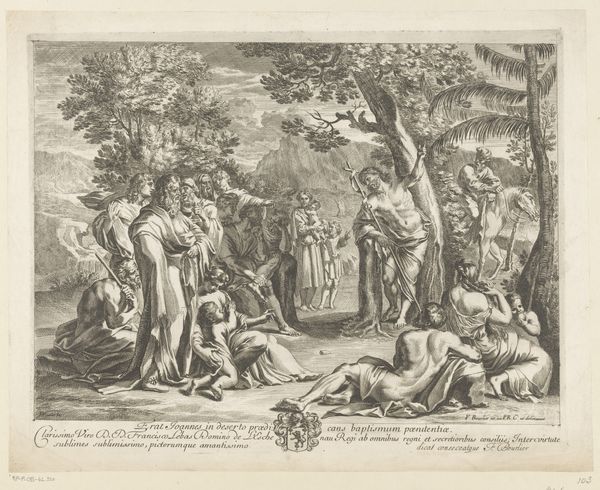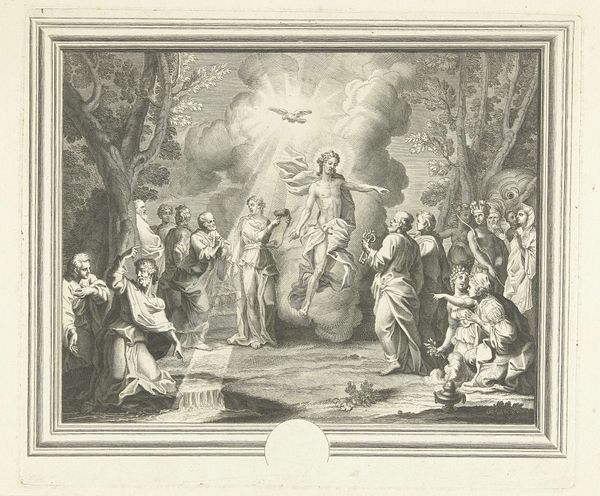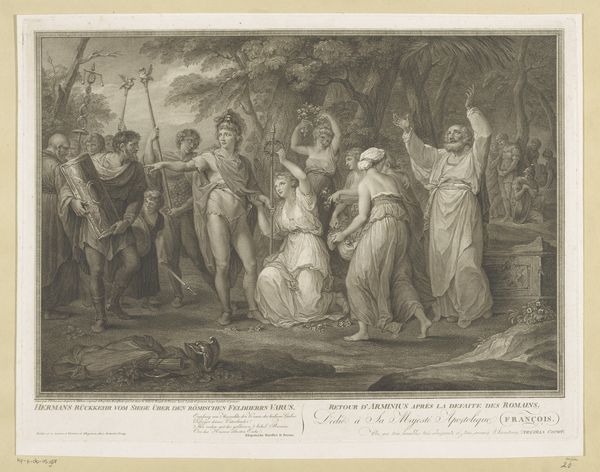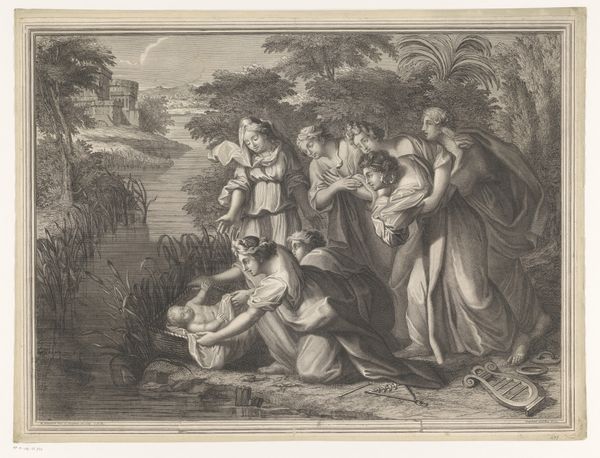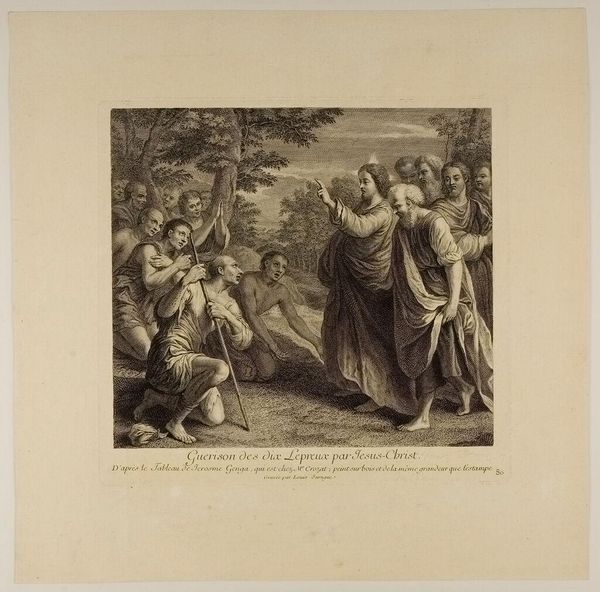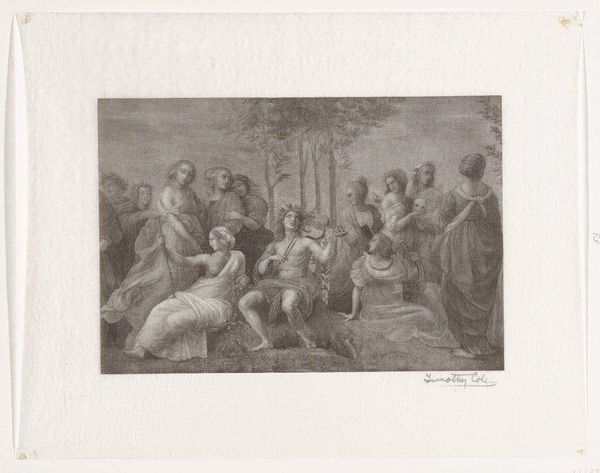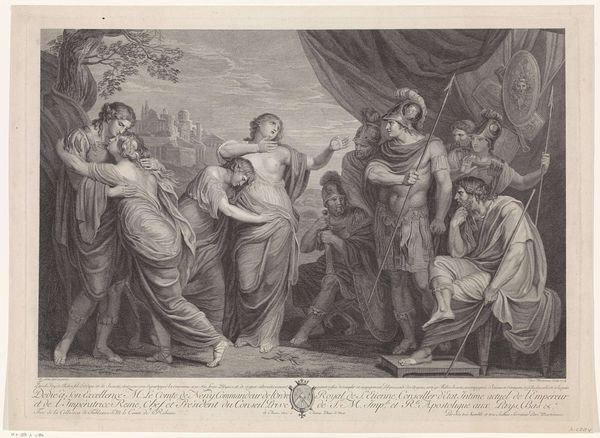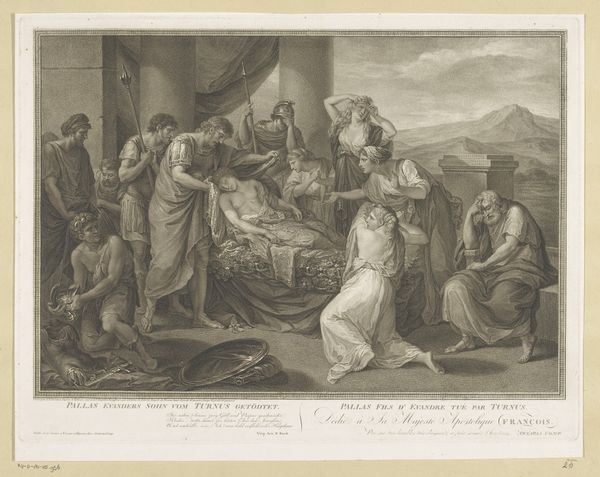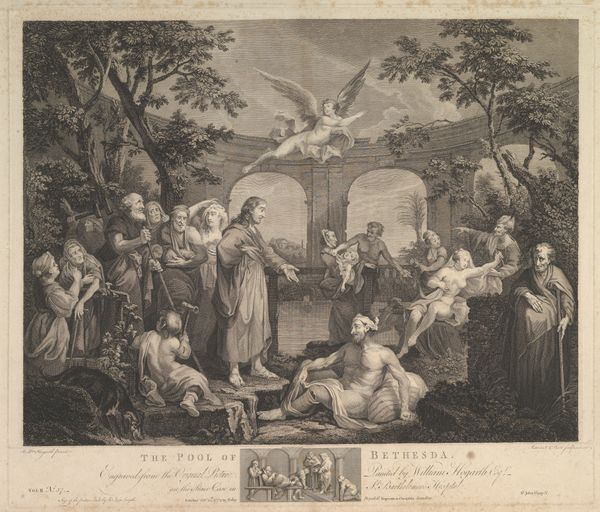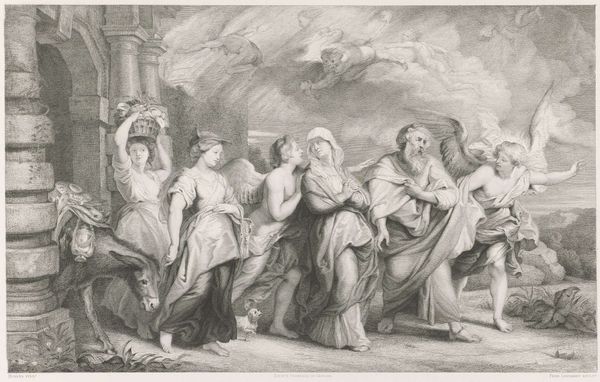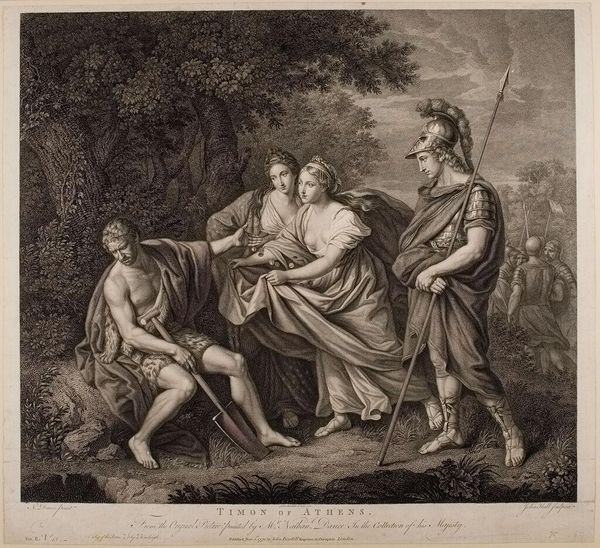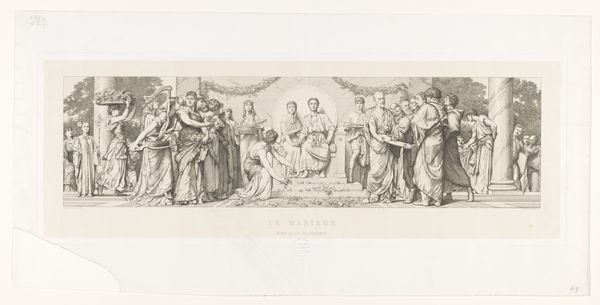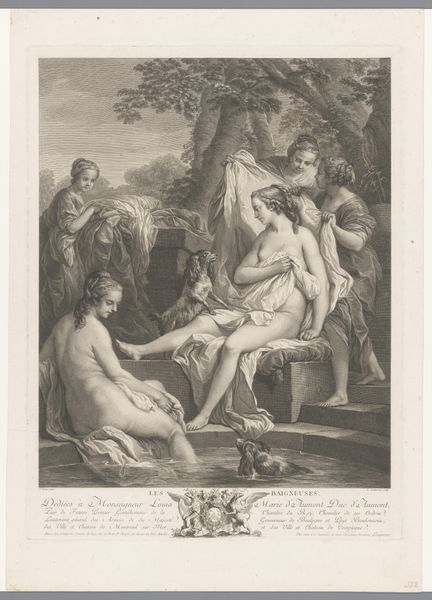
print, graphite, engraving
#
portrait
#
neoclacissism
# print
#
landscape
#
19th century
#
graphite
#
history-painting
#
graphite
#
engraving
Dimensions: height 532 mm, width 770 mm
Copyright: Rijks Museum: Open Domain
Curator: Look at the luminous glow captured in this engraving, "Apollo and the Muses on Mount Parnassus," created by Francesco Bartolozzi around 1800. What's your initial take? Editor: It feels like a stage, doesn't it? Everything is carefully posed, arranged for display. There's a certain theatrical artificiality, but executed with remarkable craft in the lines and tones. Curator: Bartolozzi was a master of printmaking, known for his delicate stipple engraving. If you examine the texture closely, you'll see how he uses tiny dots to create tonal variations and build form. The labor is evident! It transforms a reproduction into a luxury object for the educated consumer. Editor: The poses and the lyres immediately call to mind classic ideals of harmony and order. We see Apollo, bathed in light, as the embodiment of reason and artistic inspiration, surrounded by the nine muses. Note how he’s elevated both literally and symbolically on a stone dais, presiding over this imagined Mount Parnassus. Curator: The neoclassical aesthetic emphasized a return to classical ideals. This piece also evokes a very social experience. Think of print shops, collectors’ cabinets… These images were circulated and consumed as indicators of taste and refinement, functioning within a defined, somewhat closed, social economy. Editor: I'm struck by how each Muse embodies a distinct facet of the arts and sciences—poetry, music, history. But there’s more to it than simply listing their attributes. See how the composition emphasizes dialogue, inspiration, the creative process itself, as something cultivated within community and tradition. Curator: Yes, the deliberate choreography contributes to this reading, underscoring that Neoclassicism, despite its appeal to ancient Greece, was deeply entrenched in its present--the economic realities of production, consumption, and display in late 18th century society. Editor: In examining the image closely, my appreciation deepens for its exploration of inspiration, collaboration, and legacy. It serves as a symbol of timelessness that captures an aspirational world. Curator: Seeing your iconographic interpretation emphasizes how printed art like this circulated ideas about enlightenment and culture. It reminds me how artworks also embody tangible, social functions and are produced through an act of manual skill.
Comments
No comments
Be the first to comment and join the conversation on the ultimate creative platform.
